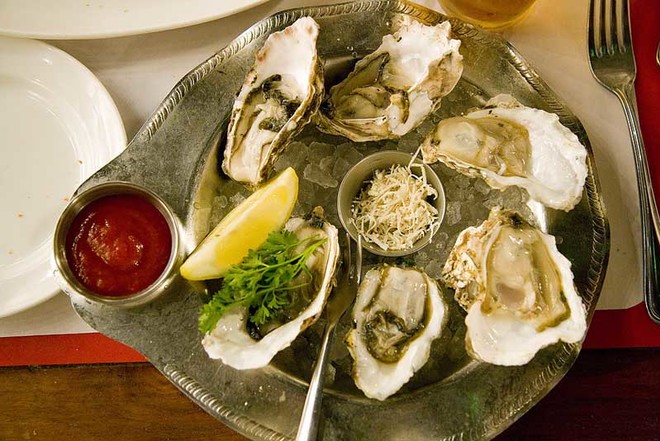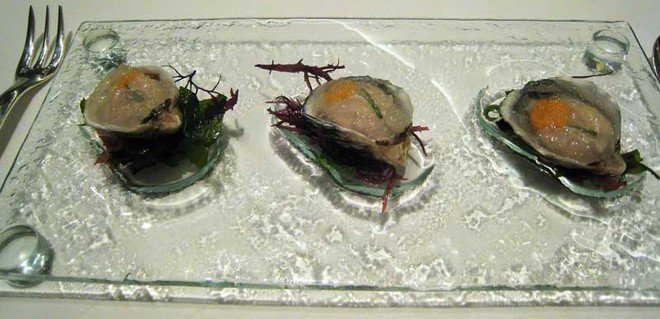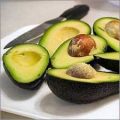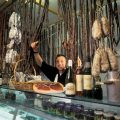 Oysters How to CookWorld Oyster Historystarted in China, which is still the world's main consumer of oysters. The Chinese have been artificially breeding oysters for a thousand years already. The French oyster culture looks young against this background - artificial breeding began here only 150 years ago. Today, oysters are bred and harvested in so many places - in the USA, Japan, Portugal, Ireland, Canada, Australia, Norway, Spain. Oysters are also found in Russia, but they are not particularly cultivated. And the Russian consumer is mainly familiar with French oysters. Yes, oysters are eaten alive. That is why the speed of delivery is so important. From France, from the sea to Moscow, through all the customs, oysters travel to us in about 24-36 hours. In the morning they are caught, in the evening the oysters are in Paris, by five in the morning they are on their way to Roissy airport, where they undergo strict customs control, are packed into an air container and fly to Moscow and St. Petersburg on scheduled (!) flights. It's scary to think what happens to the nerves of suppliers when the weather is bad for flying. VarietiesThere are tons of varieties of oysters. A detailed analysis of France alone would take up ten pages. The main thing you need to know is that all oysters are usually divided into flat (plates) and deep (creuses); there are refined oysters, refined in clerestories; semi-wild oysters of the "full sea", living in the sea in special mesh bags for three years under the supervision of farmers; and completely wild, which are collected during low tide in the right places. Oyster farming - The occupation is labor-intensive. First, small mollusks are caught and attached to special plates in pools. After several months, young oysters are transferred to water rich in plankton, where they live for 2-3 years until they grow to the desired size. Some oysters are sold immediately, the rest are planted in cages with water and plankton (clairs), where the oysters mature to marketable quality.
Oysters How to CookWorld Oyster Historystarted in China, which is still the world's main consumer of oysters. The Chinese have been artificially breeding oysters for a thousand years already. The French oyster culture looks young against this background - artificial breeding began here only 150 years ago. Today, oysters are bred and harvested in so many places - in the USA, Japan, Portugal, Ireland, Canada, Australia, Norway, Spain. Oysters are also found in Russia, but they are not particularly cultivated. And the Russian consumer is mainly familiar with French oysters. Yes, oysters are eaten alive. That is why the speed of delivery is so important. From France, from the sea to Moscow, through all the customs, oysters travel to us in about 24-36 hours. In the morning they are caught, in the evening the oysters are in Paris, by five in the morning they are on their way to Roissy airport, where they undergo strict customs control, are packed into an air container and fly to Moscow and St. Petersburg on scheduled (!) flights. It's scary to think what happens to the nerves of suppliers when the weather is bad for flying. VarietiesThere are tons of varieties of oysters. A detailed analysis of France alone would take up ten pages. The main thing you need to know is that all oysters are usually divided into flat (plates) and deep (creuses); there are refined oysters, refined in clerestories; semi-wild oysters of the "full sea", living in the sea in special mesh bags for three years under the supervision of farmers; and completely wild, which are collected during low tide in the right places. Oyster farming - The occupation is labor-intensive. First, small mollusks are caught and attached to special plates in pools. After several months, young oysters are transferred to water rich in plankton, where they live for 2-3 years until they grow to the desired size. Some oysters are sold immediately, the rest are planted in cages with water and plankton (clairs), where the oysters mature to marketable quality. The French oyster has become our standardfarm fine de claire. This is strange – fine de claire and fine de claire are not the same. “Officially, the word ‘claire’ in the name is used only for oysters from the Morin-Oléron region, which means that oysters called ‘fin de claire’, ‘special de claire’ and ‘pousse en claire’ were refined there,” says Andrey Kuspitsa, partner at the French seafood export company Zory. “And those oysters that were refined somewhere else should be called simply ‘fin’ or ‘special’. These two words denote a slight difference in meatiness, which is achieved by the aging time and which is calculated for finished oysters using a special formula.” Fins and fine de claires have more oysters in the claires, and the aging time is shorter. Speciales have fewer oysters in the claire, and they are aged longer. Therefore, it is considered that specials are cooler - they have put on more meat, although this difference will not be noticeable to a beginner. Legendary brands of specials are "Gillard-do", "Ecaille d'Argent", "White Pearl" from Yves Papin. "Full Sea" oysters are produced in Brittany and Normandy, as well as in Holland, the United States, China, Japan, Korea, Canada. Most oysters that are positioned as wild are actually "full sea" oysters. As for flat oysters, they were once the main European oysters - even the ancient Romans and medieval kings enjoyed them. In the 20th century, flat oysters suffered a mass death, and now they are rare. They are more expensive than deep ones, and are loved by connoisseurs. Flat oysters have a round shape, a pronounced marine taste and a dense meat structure. Their main representative is the "belon" (this is not a variety, but the name of a place on the Atlantic coast of France). Size
The French oyster has become our standardfarm fine de claire. This is strange – fine de claire and fine de claire are not the same. “Officially, the word ‘claire’ in the name is used only for oysters from the Morin-Oléron region, which means that oysters called ‘fin de claire’, ‘special de claire’ and ‘pousse en claire’ were refined there,” says Andrey Kuspitsa, partner at the French seafood export company Zory. “And those oysters that were refined somewhere else should be called simply ‘fin’ or ‘special’. These two words denote a slight difference in meatiness, which is achieved by the aging time and which is calculated for finished oysters using a special formula.” Fins and fine de claires have more oysters in the claires, and the aging time is shorter. Speciales have fewer oysters in the claire, and they are aged longer. Therefore, it is considered that specials are cooler - they have put on more meat, although this difference will not be noticeable to a beginner. Legendary brands of specials are "Gillard-do", "Ecaille d'Argent", "White Pearl" from Yves Papin. "Full Sea" oysters are produced in Brittany and Normandy, as well as in Holland, the United States, China, Japan, Korea, Canada. Most oysters that are positioned as wild are actually "full sea" oysters. As for flat oysters, they were once the main European oysters - even the ancient Romans and medieval kings enjoyed them. In the 20th century, flat oysters suffered a mass death, and now they are rare. They are more expensive than deep ones, and are loved by connoisseurs. Flat oysters have a round shape, a pronounced marine taste and a dense meat structure. Their main representative is the "belon" (this is not a variety, but the name of a place on the Atlantic coast of France). Size For an oyster eater who is not crazy about oysters at firstIt is difficult to distinguish between species and varieties, especially to determine the size by the name on the menu. The sizes of flat oysters are indicated by numbers and zeros - the more zeros, the larger the oyster. Four zeros - from 120 g, three - 100-120 g, two - 90-100 g, one - 80 g, 1 - 70 g, 2 - 60 g, 3 - 50 g. The size of deep oysters is indicated by letters and numbers. TTG (0) - more than 120 g, TG (1) - from 100 to 120 g, G (2) - from 75 to 100 g, M (3) - from 50 to 75 g, P (4) - less than 50 g. But all this is true only for French oysters. ChoiceIf you decide to buy oysters in a store, then remember the following rules. "You can't keep oysters in ice all the time," explains Andrey Kuspitsa. "Oysters can live for about a month, but in industrial cold conditions: from 0 to +5 degrees. There are special packages for stores - six pieces, twelve and so on. It is desirable that oysters are sold in them. The box in the store should have an original label with the date the oysters were caught. The oysters themselves should be closed and pulled tight so that they do not open. If they are already "yawning", do not take them. The only way to check the quality, if oysters are sold in an open box, is to buy one and see if it is alive. If the edges of the mantle are mobile - then it is alive. At home, you can store them in the refrigerator for up to a week from the moment of catching, in the vegetable and fruit compartment in a horizontal position. Season Everyone has heard that oysters can only be eaten from September to April - that is, in those months whose names contain the letter "р". This rule makes sense - in the summer, mollusks are engaged in procreation. Although there are many fans of summer oysters. And there are oysters that do not reproduce and have no season at all. In addition, when it is summer in Europe, in Oceania, for example, it is winter. But tradition is tradition - In April, Moscow establishments will be actively closing the winter oyster season and holding special promotions. Chefs from restaurants with the best oyster offerings commented on the most popular items in their establishments.Creuses №0/Creuses №0
For an oyster eater who is not crazy about oysters at firstIt is difficult to distinguish between species and varieties, especially to determine the size by the name on the menu. The sizes of flat oysters are indicated by numbers and zeros - the more zeros, the larger the oyster. Four zeros - from 120 g, three - 100-120 g, two - 90-100 g, one - 80 g, 1 - 70 g, 2 - 60 g, 3 - 50 g. The size of deep oysters is indicated by letters and numbers. TTG (0) - more than 120 g, TG (1) - from 100 to 120 g, G (2) - from 75 to 100 g, M (3) - from 50 to 75 g, P (4) - less than 50 g. But all this is true only for French oysters. ChoiceIf you decide to buy oysters in a store, then remember the following rules. "You can't keep oysters in ice all the time," explains Andrey Kuspitsa. "Oysters can live for about a month, but in industrial cold conditions: from 0 to +5 degrees. There are special packages for stores - six pieces, twelve and so on. It is desirable that oysters are sold in them. The box in the store should have an original label with the date the oysters were caught. The oysters themselves should be closed and pulled tight so that they do not open. If they are already "yawning", do not take them. The only way to check the quality, if oysters are sold in an open box, is to buy one and see if it is alive. If the edges of the mantle are mobile - then it is alive. At home, you can store them in the refrigerator for up to a week from the moment of catching, in the vegetable and fruit compartment in a horizontal position. Season Everyone has heard that oysters can only be eaten from September to April - that is, in those months whose names contain the letter "р". This rule makes sense - in the summer, mollusks are engaged in procreation. Although there are many fans of summer oysters. And there are oysters that do not reproduce and have no season at all. In addition, when it is summer in Europe, in Oceania, for example, it is winter. But tradition is tradition - In April, Moscow establishments will be actively closing the winter oyster season and holding special promotions. Chefs from restaurants with the best oyster offerings commented on the most popular items in their establishments.Creuses №0/Creuses №0 Chef of the In Vino restaurant Evgeny Chernyshev:«Kuril oyster– is a variant of the Japanese oyster, which can be called Russian, because it is harvested on our side in Kamchatka and the Kuril Islands. It differs from European oysters in its very large size - from 500-600 g to a kilogram. One such oyster is about 100 g of medium-fat meat with a neutral but pronounced seafood flavor. It has to be eaten with a knife, which is quite exotic for oysters. But our guests really like this light extreme. These oysters grow from four to five years, and the technology for harvesting them is quite complex, so they are more expensive than farmed ones. By the way, they have a clear seasonality: they run out in mid-April and appear again only in the fall. «Croesus №0» – 150-gram classic farm oyster - with iodized tender flesh and a slightly nutty flavor. Not salty, not sharp - a very popular option, suitable for culinary use - baking with vegetables, cheese, or sauce, using in dishes raw. Dutch wild and Fin de claire Chef Restaurant "Sea of Time" Dmitry Gudin: "Dutch wild ones are distinguished by their size and elongated shape. It happens that they grow up to half a kilogram. They have a fairly clear seasonality - these oysters are already running out in May. This is a flat oyster with more transparent gray-green meat, a very large shell, with a large amount of not very fatty meat. The oyster is aromatic, sea, but not too sharp. Such large options, by the way, are convenient for baking - with Roquefort, cream, spinach, vegetables, parmesan, other sharp fatty cheeses. Fine de claire is one of the best farm oysters, especially with the Label Rouge sign. This is a classic exquisite French oyster. It has a green tint - due to phytoplankton living in the claires, and this is an exclusively natural phenomenon and it is impossible to predict it. Some people are afraid of the green color, but true connoisseurs love exactly these "fin de claires". Belle de Quiberon and "Poussans claires"/ Pousses en claires
Chef of the In Vino restaurant Evgeny Chernyshev:«Kuril oyster– is a variant of the Japanese oyster, which can be called Russian, because it is harvested on our side in Kamchatka and the Kuril Islands. It differs from European oysters in its very large size - from 500-600 g to a kilogram. One such oyster is about 100 g of medium-fat meat with a neutral but pronounced seafood flavor. It has to be eaten with a knife, which is quite exotic for oysters. But our guests really like this light extreme. These oysters grow from four to five years, and the technology for harvesting them is quite complex, so they are more expensive than farmed ones. By the way, they have a clear seasonality: they run out in mid-April and appear again only in the fall. «Croesus №0» – 150-gram classic farm oyster - with iodized tender flesh and a slightly nutty flavor. Not salty, not sharp - a very popular option, suitable for culinary use - baking with vegetables, cheese, or sauce, using in dishes raw. Dutch wild and Fin de claire Chef Restaurant "Sea of Time" Dmitry Gudin: "Dutch wild ones are distinguished by their size and elongated shape. It happens that they grow up to half a kilogram. They have a fairly clear seasonality - these oysters are already running out in May. This is a flat oyster with more transparent gray-green meat, a very large shell, with a large amount of not very fatty meat. The oyster is aromatic, sea, but not too sharp. Such large options, by the way, are convenient for baking - with Roquefort, cream, spinach, vegetables, parmesan, other sharp fatty cheeses. Fine de claire is one of the best farm oysters, especially with the Label Rouge sign. This is a classic exquisite French oyster. It has a green tint - due to phytoplankton living in the claires, and this is an exclusively natural phenomenon and it is impossible to predict it. Some people are afraid of the green color, but true connoisseurs love exactly these "fin de claires". Belle de Quiberon and "Poussans claires"/ Pousses en claires Chef of the Dissident Winery Dmitry Parikov:"Belle de Quiberon" - 2013; deep-sea oysters from the province of Brittany, which have spent their entire 36-month life at a depth of 15-16 m, 10 km from the coast, in the clean and rich in microelements waters of the Gulf of Quiberon in the Atlantic Ocean. This is an oyster of the "full sea", it has not undergone any additional aging, it has the most natural oyster iodine taste. "Pousse en claire" is one of the most exquisite oysters. These oysters spend their entire lives in the claires, where they are free and tasty. They grow for only 18 months, but in the best conditions - and grow to the same size as other varieties in three years. This is the most refined oyster of the specialties, it is light, and the edges of the mantle are black. Its taste is sweet, with a distinct hazelnut flavor. If we are talking about delicacies, then this is it."
Chef of the Dissident Winery Dmitry Parikov:"Belle de Quiberon" - 2013; deep-sea oysters from the province of Brittany, which have spent their entire 36-month life at a depth of 15-16 m, 10 km from the coast, in the clean and rich in microelements waters of the Gulf of Quiberon in the Atlantic Ocean. This is an oyster of the "full sea", it has not undergone any additional aging, it has the most natural oyster iodine taste. "Pousse en claire" is one of the most exquisite oysters. These oysters spend their entire lives in the claires, where they are free and tasty. They grow for only 18 months, but in the best conditions - and grow to the same size as other varieties in three years. This is the most refined oyster of the specialties, it is light, and the edges of the mantle are black. Its taste is sweet, with a distinct hazelnut flavor. If we are talking about delicacies, then this is it."

Making Money with Desserts: Success Stories
Evgeniya Polischuk (Fedutinova) instagram:@evgeniyafedutinovavk.com/janeshomebaking– It all started with baking for family and friends. Gradually, I started posting photos of my baked goods on Instagram – and orders started coming in. I made my first custom-made cake on October 13, 2014, and a little earlier I started making macaroons and cupcakes. You could say that the business “found me”, I am very […]

Soups are cold recipes with photos
Cold cucumber soup with yogurt and lemonsorbet from the chef of the restaurant La Taverna Alexander Zhurkin Photo: Getty Images Ingredients: Plain yoghurt – 125 g Cucumber – 150 g Lemon/lime sorbet – 50 g Cocktail shrimp – 24 g Fresh ginger juice – 1 g Lime juice – 5 g Fresh orange juice – 5 g Parsley – 1 g Pink pepper – 1 g Watercress – […]

barbeque kebab
Pork tenderloin in glaze Photo:Dmitry Bayrak/dbstudioPreparation time: 20 minutes + marinating time.Calories: 454 kcal per serving.For 4 servings: 4 pork tenderloins (approximately 300 g each), 1 onion, 2 cloves of garlic, 1 tsp. lemon zest, 1 tsp. lemon juice, a pinch of ground cumin, coriander and turmeric, 1 tbsp. vegetable […]

Pierre Duacan: dietary recipes: Ducane diet
Beetroot soup Photo:Season’S, Luxury Hotels RepresentationYou will need:· Boiled beetroot – 60 g· Fresh cucumbers – 20 g· Red radish – 20 g· Green onions – 10 g· Egg – 1 pc.· Drinking mineral water – 200 g· Salt – 1 gPreparation:· Boil the egg and beetroot.· Grate the cucumbers, radish and part of the beetroot. Put everything […]





